
Affiliate Marketing for Dummies – An Intelligent Guide for Beginners
No, you’re not a dummy. I simply want to say my guide on starting with affiliate marketing is clean, simple, and practical.
It’s all you need to understand the concept of partnership marketing, and then get cracking on making your first (of many) affiliate commissions
No time to waste, so let’s get started!
Effortlessly export your Google Docs to WordPress with just 1-click.
Get Started Today
According to Wikipedia:
“Affiliate Marketing is a type of performance-based marketing in which a business rewards one or more affiliates for each visitor or customer brought by the affiliate’s own marketing efforts.”
That’s nice… but what does it really mean?
It means affiliate marketing is a type of performance-based marketing where affiliates (bloggers like you) connect with brands and sell their stuff on their behalf.
For every sale they make they get awarded a percentage in commission.
And the sales are tracked and managed via special affiliate tracking software and affiliate links.
Affiliate links are special links that have your unique affiliate id code attached to them.
When someone clicks and buys, the code gets recognized by the system and you get awarded the sale. You can use ad tracking software such as Voluum to control all your digital marketing campaigns in one place and avoid jumping between multiple dashboards.
Here’s an illustration of how affiliate marketing works.
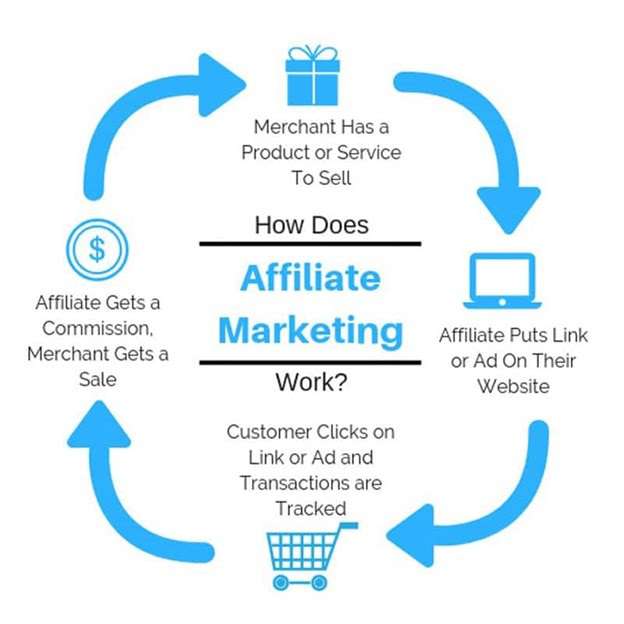
And here’s are some of the ways you can make money with affiliate marketing:
In the PPC model, affiliates get paid for clicks they can generate for the merchant.
So the lead doesn’t have to convert in order for the affiliate to make a commission.
That’s the upside of this model.
The (big) downside is that you get paid cents for clicks, and in order to be profitable, you must have a highly trafficked blog, with at least several thousand daily visitors.
PPC is not a worthwhile option for most bloggers as most of them never reach the traffic levels needed to make it a profitable venture.
With this model, you make money by converting visitors to the merchant site into leads.
This means you need to convince them to perform some kind of action, be it subscribe to their email list, sign up for a free trial, download something or fill in a form.
The specific action depends on the merchant you’re working with.
This is the most common and popular model for affiliate programs. Here merchants pay affiliates not for the traffic or leads they send them, but only for the new customers they got.
This means your income depends on the percentage of people that have bought the product you were promoting.
The good news is that thanks to the cookie technology they don’t have to convert them right away for you to get your commissions.
They can purchase at a later date and you’ll still get paid.
Though how much later is heavily dependent on the program.
For example, Amazon gives you only a 24h cookie window, while Fiverr gives you 30 days and some programs (for example Wealthy Affiliate) give you time-unlimited cookies.
There are 6 clearly delineated steps when it comes to starting with affiliate marketing.
Let’s cover them all below.
Don’t be confused by the word, a niche is just a group of people looking for stuff to buy.
And choosing a niche means building a website and creating content that caters to that group of people; it means helping them with their problems and bringing them solutions, and in the process earning good money.
Picking the right niche for them is a stumbling block for many a new blogger but it doesn’t have to be for you.
It’s all about answering the 3 key questions:
Some bloggers will tell you that passion is not primary and that you should follow the money.
Money creates passion.
To each their own niche selection process, but I say here that your niche is a narrow area of life where you will spend a lot of your precious time, so you better love it to the core.
You don’t want to one day wake up and look at the past with regret for having spent so much time doing what you despised, all because it was profitable, or you thought it’d be profitable
Your niche must be your passion because that fire will get you going to learn the stuff you need to learn so your blog can truly become a helpful resource on the web.
And in affiliate marketing, the more you help, the more you earn.
Besides being passionate about X, your niche had better be lucrative.
Being passionate about something won’t pay your bills, but sharing your passion with hundreds of thousands of people will. And these can’t be just any people, it must be those who are able and willing to pay for products and services.
A simple way to gauge niche profitability and popularity is to go to Amazon.com and search for your target product.
Your goal is to see how many different products there are.
Here, the Turmeric niche is heavily popular with more than 1000 products listed.
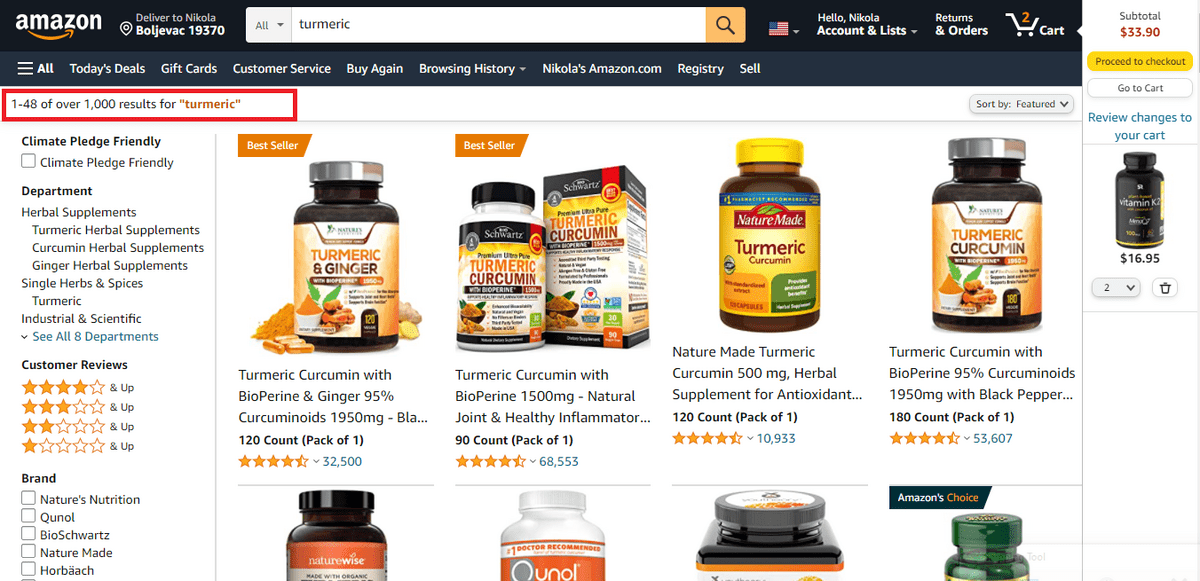
If you and 100 other people are extremely passionate about a niche, you don’t have a potential affiliate business on your hands and you need to keep looking.
Going too narrow is possible and a common rookie mistake. Instead, you must pick a niche that is wide enough to give room for serious growth, but not so wide that you can’t compete.
For example, the dog collar niche is definitely too narrow, but the dog accessories space is not.
Got it?
The next step is building an affiliate site.
Here’s how:
A domain name is a virtual address where your site will live.
You can pick one via domain name registrars like Namecheap or Godaddy, and also most hosting providers give you the option of purchasing a domain name through them.
My best tips for choosing an optimal domain name are:
The final tip, make it branded.
Branded domain names give you absolute freedom as to what you can cover on your blog.
For example, my site’s domain name is nikolaroza.com, and just by the sound of it, you could never guess it’s a marketing blog. And it is, and a smashing good one.
On the other hand, you can have a domain name with a keyword in it, and this is called a partial match domain (PMD).
These are also good as long as they are not too optimized.
For example, my friend’s domain is bloggingexplained.com, the word “blogging” being a relevant keyword there.
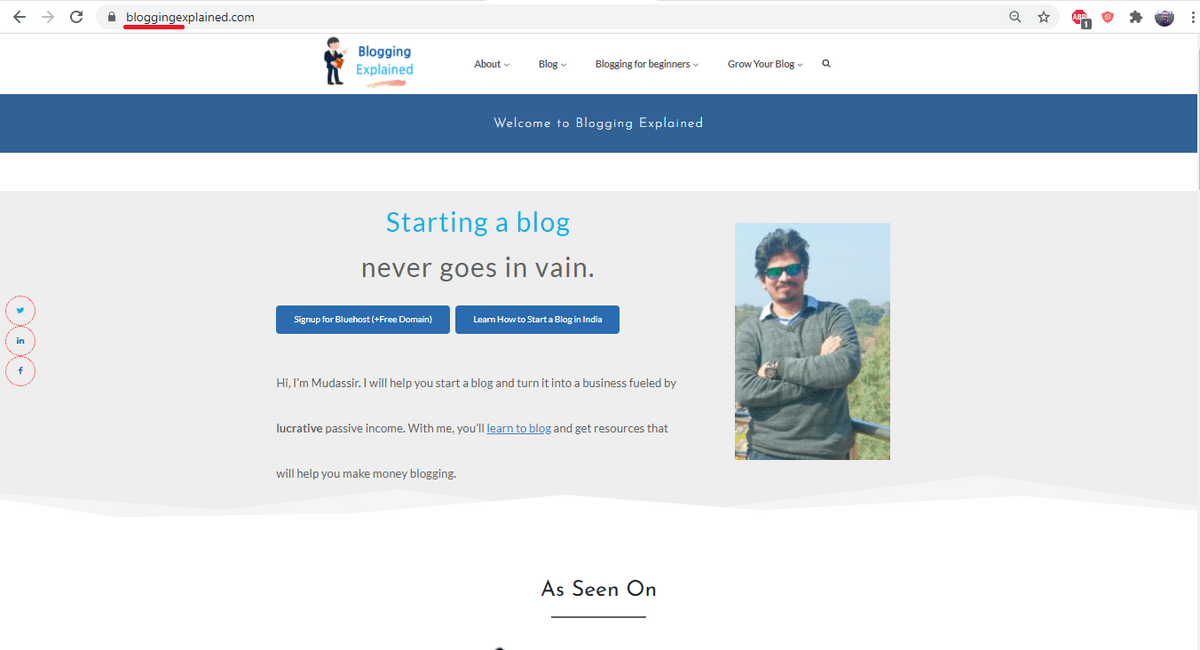
Choosing the right platform can be rephrased to choosing self-hosted WordPress.org.
WordPress.org is the most widely used blogging platform in the world, and with thousands of themes and plugins at your disposal + custom coding capabilities, you really can make the site of your dreams.
Plus, owning a self-hosted website allows you to monetize in any way you want, while other platforms often restrict you in that crucial area.
Hosting services are like large hotels where you can rent a room to store your site’s files.
There are hundreds of hosting providers out there, but I suggest you keep it simple and affordable and go with either Bluehost or HostGator.
Both are decent hosts that can get you started for cheap and which will carry you far with minimum downtime and hassle.
Installing WordPress used to be a pain in the arse for newbie bloggers.
Well, those days are long gone as nowadays most hosts let you install WordPress with a click of a button.
Can’t be simpler than that.
A website theme is like an outfit for your blog, it’s what your site wears when it’s in public.
There are free themes and there are paid themes. I’m sure you can guess which ones are better, but for starters, a free theme can help you get started fast and for free.
Here’s a curated list of free WordPress themes, courtesy of SmartBlogger.com
While checking to see whether your niche is profitable you probably found a bunch of products you’d like to promote.
Guess what?
Behind each of those products, there is an affiliate program you can join and that you have to join so you make a commission when you make sales.
To find affiliate programs, you simply need to go to Google and type “ product name+ affiliate program”.
For example, if you were to promote Grammarly, you’d search for “Grammarly affiliate program” and Google would show it as the first result.
Here are a couple of pointers (well, actually more than a couple) to remember when picking programs to partner with.
First, the product you’re promoting must be legit and high quality or you won’t make a dime as an affiliate.
Second, it’s often a safe bet to follow other affiliates.
If they’re promoting something, and especially if they’re bragging about the success they’re having, then you’re good to go.
Don’t try to promote something no one else is because there’s likely a good reason for it.
Either the product is completely unknown, which means you won’t make sales, or it’s so bad other affiliates have already recognized it as a waste of time.
Third, always check the profitability of a program. You need to know how much money you can earn promoting X.
For example, I created this page about Grammarly student discounts before I knew the commission rate of their affiliate program.
Rookie mistake.
Fourth, though there are services that can manage your affiliations with various programs within a single dashboard, I recommend you have a spreadsheet where you will record your status and relationship with each affiliate program you applied for.
The spreadsheet should be simple to manage and have these necessary columns:
Fun fact, I recently got refused by Grammarly’s affiliate program, even though I was 100% sure I’d get accepted.
My plan is to apply again in the near future and I have no doubt in my mind that this time I’ll get it.
The point is that you too will get rejected sometimes, and when it happens be prepared to keep going onto the next one.
You can always return later to those who rejected you and try again, as nothing’s set in stone.
Fifth, before applying for an affiliate program you need to fulfill a couple of important requirements.
For example, you need to have obligatory pages published on your site
Obligator pages are:
These are also called legitimacy pages as they present you as a legitimate entity on the web.
Sixth, you need to have 5-10 quality articles published so that the person reviewing your site and who’ll decide whether to accept you can tell what you bring to the table.
Seven, your site also needs to look decent, but that doesn’t mean you need a premium theme or that you need to hire a website designer.
Eighth and final tip, there are 2 ways to join affiliate programs.
Some, usually larger brands host their affiliate programs by themselves.
For instance, Grammarly is such a company, and so are Unbounce, Missinglettr, Hootsuite…
But most affiliate programs of smaller brands are parts of affiliate networks.
Affiliate networks are large platforms that pool together hundreds or even thousands of affiliate programs.
By joining a single platform, you get access to all of them, though sometimes you still have to apply to join the affiliate program, and there’s a review process in place to weed out unsuitable bloggers.
Examples of affiliate networks are:
You can’t make sales until you’ve created content.
Affiliate content is broadly divided into monetizable and informational content.
Monetizable content is one where people intend to buy and your content helps them decide.
Some of the types are:
Reviews are articles where you take product X and you break it apart so that a website visitor and potential buyer can see what they’ll get if they purchase.
Here’s an example review from my friend James.
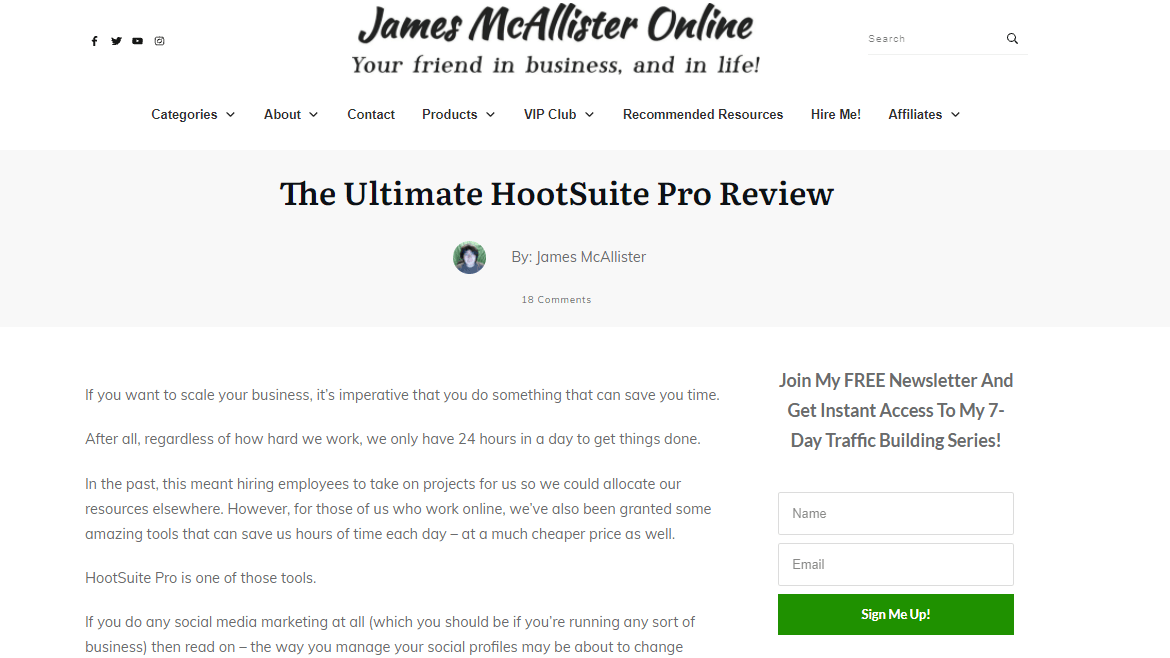
Comparison posts are similar to reviews, except that instead of reviewing a product, you review two of them, (or two types of products as in the example below) and you pit them against each other to see who’ll come out on top.
Here’s an example from this site.
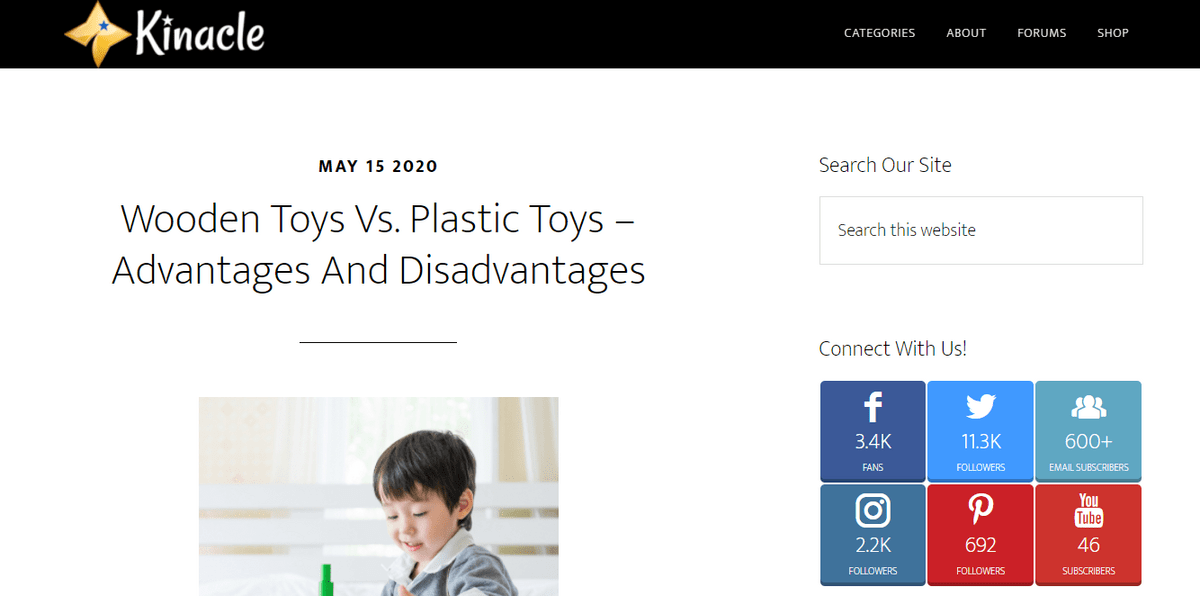
Listicle posts are similar to comparison posts, but this time you’re comparing not one or two products or services, but dozens of them, sometimes even hundreds of them.
Here’s an example from this post.
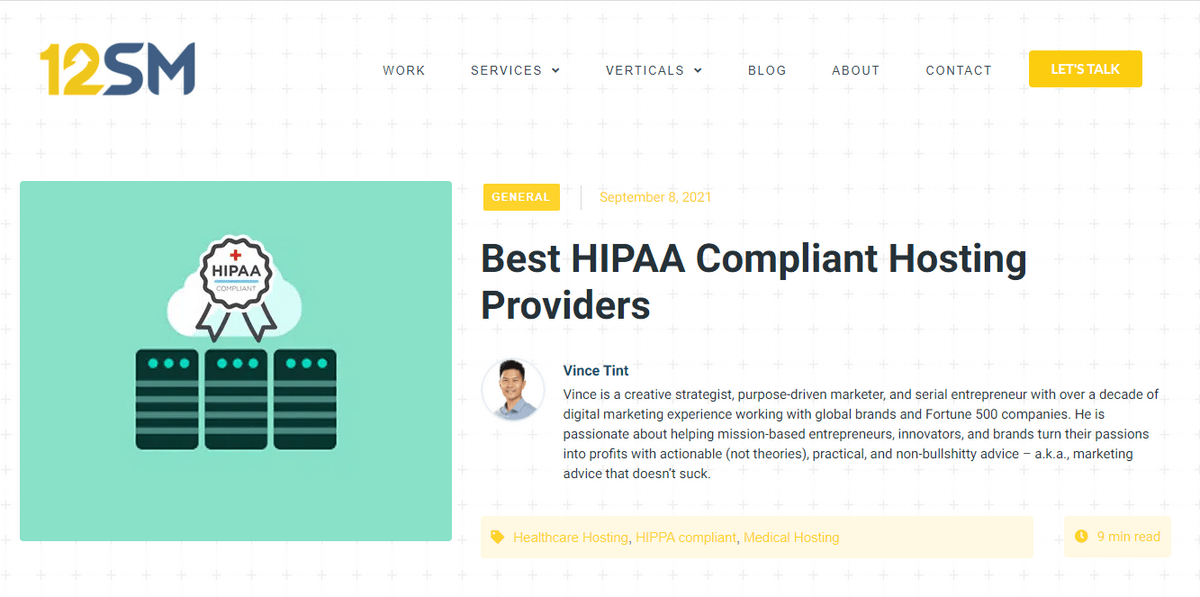
This last type of content can also host affiliate links, but it thematically and topically strongly leans on the educational side.
Your how-to-guides exist to show and teach them something they didn’t know, and if they make you a sale or two in the process, hey, hooray for you.
Here’s an example of an informational article from Twine.
It teaches them, builds trust, and hosts affiliate links, all at the same time. Beautiful!
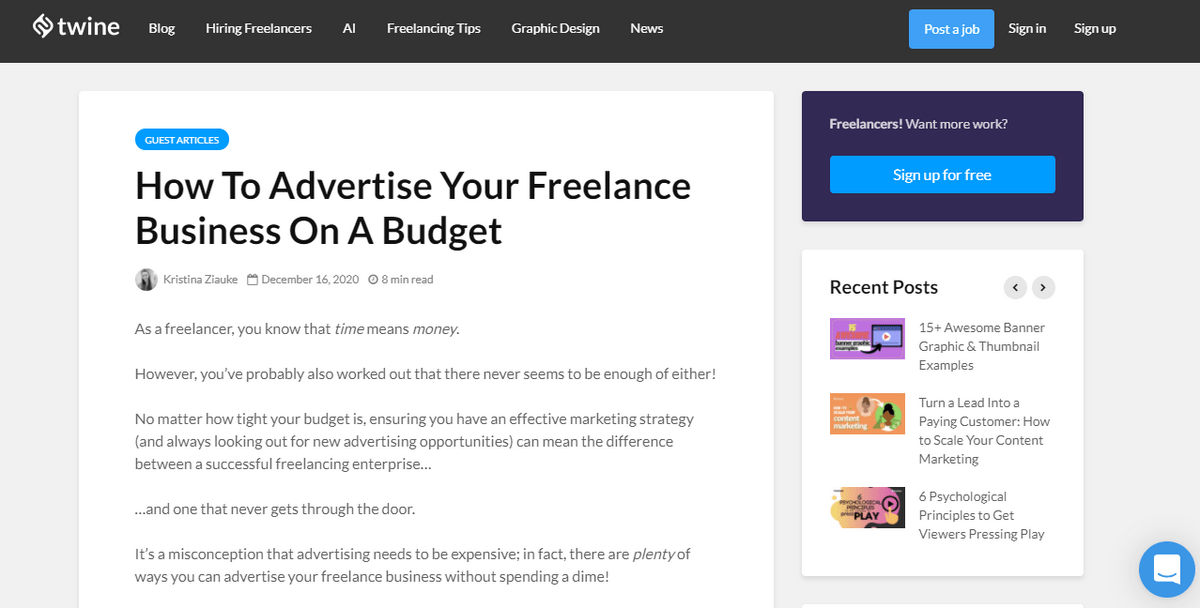
Pro tip: as a beginner, you don’t need a content strategist to start blogging. Instead, you need to start publishing.
But don’t do it willy-nilly. Do it with a plan.
For starters, I recommend you publish 20 money-keyword posts. These articles will make you money when ranked and it makes sense to get them up first;
And then start mixing it up with a 1:1 ratio of monetizable and informational content.
I suggest you use a content calendar to keep track of your publishing and be organized.
Blog promotion comes in many shapes and forms.
Here are some of them.
On-page SEO are things like proper URL structure, adding entities, tuning keyword density, writing clever titles, etc…
It’s the basic stuff you still need to do superbly or you will never rank no matter your content’s quality.
It’s all about proper keyword usage on the page and I suggest you consult this on-page SEO guide from Serpstat (authored by me) to learn more about it.
Off-page SEO is the larger part of the blog post promotion cycle.
And off-page has become almost synonymous with link building, but there’s so much more to it.
Here are some other clever ways to promote affiliate content.
Most of these are not strictly SEO, but they do help your SEO in aggregate. This means many promotional avenues combined lead to the desired effect of your organic traffic and rankings rising substantially.
An email list is a group of people who’ve given you their email and subscribed to receive updates for you. It’s a form of permission-based marketing.
And… I’m quite a bit conflicted about this step.
Yes, every successful blogger has a list, and yes, you will need to build one too, but probably not at the beginning of your career when you haven’t even started your affiliate marketing journey.
I’m a vehement proponent of the idea that it is useless to set up forms to capture people’s emails when you don’t have any traffic flowing to your site
It is much smarter to invest that time into creating more content for your brand, content that will get ranked and pull in organic traffic from the search engines.
And once you have at least 100 visitors per day, then you can think about starting to build a list.
But, if you wish to start immediately then here’s a beginners’ guide to email marketing from Moosend that can guide you on your first steps.
I promised you a simple guide that will explain affiliate marketing in such a way that even dummies could get it.
You’re not a dummy, but still, did you get it?
If yes, go and start your blog, join affiliate programs, produce content and add affiliate links and make money.
If not, tell me where my guide failed you in the comment section below, or tweet me questions on Twitter and watch me respond faster than the Flash can circle the globe ten times in a row.